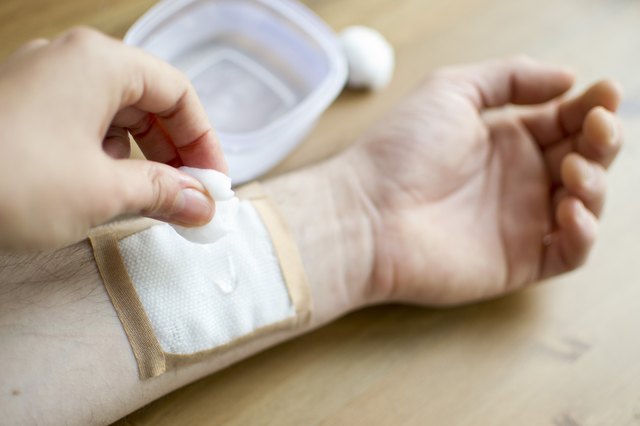Find the latest information about How To Prevent Gauze From Sticking To A Wound in this article, hopefully adding to your knowledge.

Prevent Gauze from Sticking to a Wound: A Comprehensive Guide
In the realm of wound care, preventing gauze from adhering to the delicate surface of a wound is crucial. As someone who has witnessed firsthand the agony my grandmother endured when her bandage was removed, I understand the importance of avoiding this discomfort. This comprehensive guide will elucidate the causes and provide practical solutions to mitigate this issue.
To delve deeper into the intricacies of wound care, let’s explore a condition called “wound adherence.” This phenomenon occurs when the gauze dressing becomes firmly attached to the wound bed, causing pain and potentially damaging the healing tissue upon removal. Understanding the underlying mechanisms behind wound adherence is the key to developing effective prevention strategies.
Etiology of Wound Adherence
Several factors contribute to the formation of adhesions between gauze and wounds. One primary culprit is the wound exudate itself. As the wound heals, it naturally produces a fluid that contains proteins, cells, and other molecules that can interact with the gauze fibers, forming a cohesive bond.
Another contributing factor is the choice of gauze material. Traditional cotton gauze has a rougher surface, which increases the likelihood of snagging on the wound surface. Additionally, dry gauze can create suction by absorbing the wound exudate, further enhancing its adherence.
Preventing Wound Adherence: Practical Solutions
Fortunately, there are several effective strategies to prevent gauze from sticking to a wound:
- Moisturize the wound bed: Applying a thin layer of non-adherent dressings, such as hydrogel or silicone-based dressings, over the wound bed helps reduce friction and prevents the gauze from drying out, thus minimizing adhesion.
- Use non-adherent gauze: Several types of gauze are specifically designed to minimize adherence, such as petroleum-impregnated gauze or gauze coated with a non-adherent layer like silicone. These dressings create a barrier between the wound and the gauze, reducing the likelihood of sticking.
- Avoid using dry gauze: When applying gauze to a wound, ensure it is sufficiently moistened with sterile saline or another wound-care solution. This helps prevent suction and makes the gauze less likely to adhere to the wound bed.
- Change dressings frequently: Regular wound dressing changes prevent the gauze from staying in place for extended periods, reducing the risk of adherence. The frequency of dressing changes will depend on the specific wound and its healing progress.
- Apply gentle pressure: When applying gauze to the wound, use light pressure to secure it without causing discomfort. Excessive pressure can further embed the gauze into the wound, increasing the risk of adhesion.
Expert Advice and Tips
In addition to the practical solutions mentioned above, consider the following expert tips for further preventing wound adherence:
- Avoid using antiseptic solutions: Some antiseptic solutions, such as iodine or hydrogen peroxide, can be harsh on the wound and increase the risk of adhesion. Opt for milder solutions like sterile saline or diluted chlorhexidine.
- Consider pain medication: In cases where wound adherence may cause significant discomfort, consider administering pain medication before dressing changes to minimize the pain associated with removing the gauze.
Frequently Asked Questions (FAQs)
To address common queries surrounding wound adherence, here is a brief FAQ section:
Why is it important to prevent wound adherence?
Preventing wound adherence reduces pain and discomfort during dressing changes, minimizes damage to the healing tissue, and promotes optimal wound healing.
What are some signs of wound adherence?
Pain upon gauze removal, bleeding or tearing of the wound bed, and difficulty removing the gauze without damaging the wound are all potential signs of wound adherence.
How long should I leave gauze on a wound?
The duration for which gauze should be left on a wound depends on the specific wound and its healing progress. Follow the dressing change schedule recommended by your healthcare provider.
Conclusion
By understanding the causes and implementing the prevention strategies outlined in this guide, you can effectively mitigate wound adherence and enhance the comfort and healing process of your patients. Remember, preventing wound adherence goes beyond pain management; it also contributes to optimal wound healing outcomes. Are you interested in learning more about wound care and related topics? Explore our blog for further insights and valuable information.

Image: theprepared.com
How To Prevent Gauze From Sticking To A Wound has been read by you on our site. We express our gratitude for your visit, and we hope this article is beneficial for you.